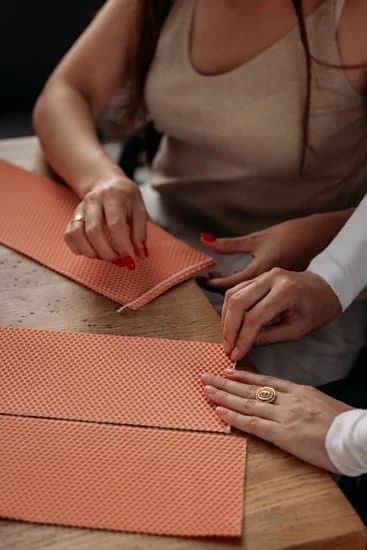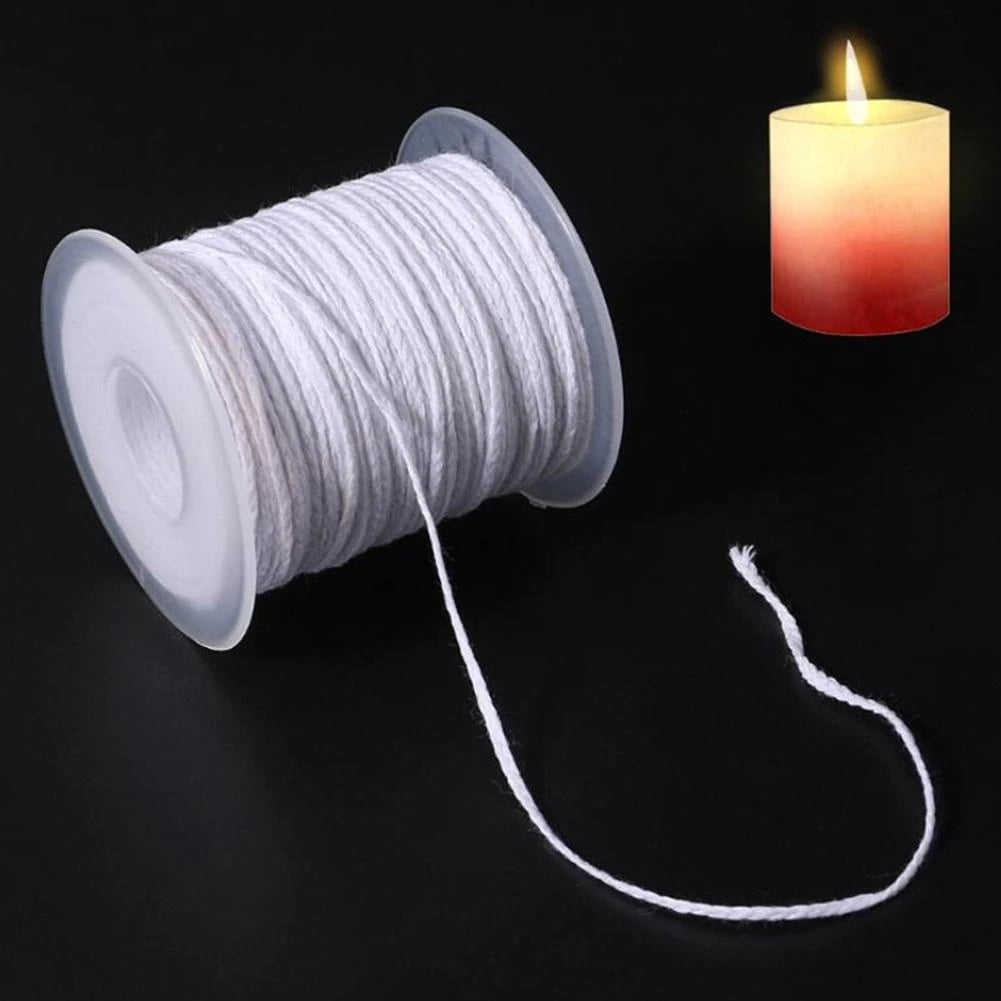Candle making tunneling is a common issue that many candle makers encounter. In this article, we will delve into the science behind tunneling in candle making, explore its common causes, and provide tips for preventing it. Understanding the importance of proper wick placement and how to fix tunneling in candles will also be discussed.
Tunneling in candle making occurs when the wax melts down the center of the candle, leaving excess wax around the edges. This not only affects the aesthetic appeal of the candle but also reduces its burn time. By understanding the factors that contribute to tunneling and learning how to prevent it, candle makers can produce high-quality candles without this issue.
In the following sections, we will discuss the science behind tunneling in more detail and explore the common causes of this problem. We will also provide practical tips for preventing tunneling in candle making, emphasize the importance of proper wick placement, and offer solutions for fixing tunneling in candles.
Additionally, we will look at how choosing the right wax and wick combination and exploring different candle making techniques can minimize tunneling. Whether you are new to candle making or an experienced crafter, mastering the art of creating candles without tunneling is essential for producing professional-quality products.
Understanding the Science Behind Tunneling in Candle Making
What Is Tunneling?
Tunneling in candle making refers to the formation of a hole or tunnel down the center of the candle, leaving unused wax along the sides. This can result in a shorter burn time and an uneven appearance. Understanding the science behind tunneling is essential for any candle maker looking to produce high-quality candles.
Factors Contributing to Tunneling
The science behind tunneling involves several factors such as the type of wax used, the size and type of wick, and even environmental conditions like drafts or room temperature. When a candle burns, it creates a melt pool which should ideally cover the entire surface of the candle. If this does not happen, tunneling can occur.
Metastable State and Heat Zones
One of the key scientific concepts behind tunneling is related to the metastable state of wax. As the outer edges of the candle begin to solidify quicker than the center, it creates different heat zones within the candle. If not properly managed, these heat zones can lead to uneven melting and ultimately tunneling. Understanding these principles can help candle makers make informed decisions about their wax selection and wick placement strategies to avoid tunneling issues.
Common Causes of Tunneling in Candle Making
Tunneling in candle making occurs when a hole forms down the center of the candle, leaving unburned wax along the sides. This can be frustrating for candle makers who put a lot of effort into creating beautiful, high-quality candles. Understanding the common causes of tunneling is important in order to prevent this issue from occurring.
One common cause of tunneling is using the wrong size wick for the diameter of the candle. If the wick is too small, it will not create enough heat to melt the wax all the way to the edges, leading to tunneling. On the other hand, if the wick is too large, it may create a flame that burns too hot and fast, also causing tunneling.
Another common cause of tunneling is not allowing the candle enough time to achieve a full melt pool during each burn cycle. This can happen if candles are extinguished too soon after being lit. It’s important for candles to be burned long enough for the wax to melt all the way to the edges of the container, which helps prevent tunneling in future burns.
Additionally, drafts can also contribute to tunneling in candles. If there is a draft in the room where a candle is burning, it can cause uneven burning and lead to tunneling. It’s important to place candles away from drafts and air vents in order to ensure an even burn and prevent tunneling issues.
By understanding these common causes of tunneling in candle making, you can take proactive steps to prevent this issue from occurring and create beautiful, high-quality candles that burn evenly and completely.
Tips for Preventing Tunneling in Candle Making
Tunneling in candle making can be a frustrating issue for many candle makers. However, with the right tips and techniques, it is possible to prevent tunneling and create beautiful, even-burning candles. In this section, we will explore some important tips for preventing tunneling in candle making.
Choose the Right Container
One of the key factors in preventing tunneling is choosing the right container for your candles. Make sure to use a container that is wide enough to allow the wax to pool evenly as the candle burns. If the container is too narrow, it can cause tunneling as the wax burns down the center and leaves excess wax around the edges.
Trim Your Wick
Proper wick maintenance is essential for preventing tunneling in candles. Be sure to trim your wick to the recommended length before each use, typically about 1/4 inch. A properly trimmed wick will help the candle burn more evenly and reduce the likelihood of tunneling.
Avoid Drafts
Drafts can also contribute to tunneling in candles. When making and burning your candles, be sure to keep them away from drafts that can cause uneven burning. This can include fans, open windows, or air vents.
By following these tips and paying attention to other common causes of tunneling such as using the correct wax and wick combination, you can improve your candle making skills and create high-quality candles that burn evenly without tunneling issues.
Importance of Proper Wick Placement in Preventing Tunneling
When it comes to preventing tunneling in candle making, proper wick placement plays a crucial role. If the wick is not placed correctly, it can lead to uneven burning and ultimately result in tunneling. Here are some important tips to consider when it comes to proper wick placement in candle making:
- Choose the right size wick for your candle: The size of the wick should be proportional to the diameter of the candle. A wick that is too small will not be able to create a melt pool that reaches the edges of the container, leading to tunneling. On the other hand, a wick that is too large can cause excessive heat and also result in tunneling.
- Center the wick: It’s important to ensure that the wick is centered in the middle of the container when pouring the wax. If the wick is off-center, it can cause uneven burning and increase the risk of tunneling.
- Use a wick holder: When pouring hot wax into the container, use a wick holder to keep the wick straight and centered until the wax cools and solidifies. This will help maintain proper wick placement and prevent tunneling.
Properly placing the wick in your candles is essential for achieving an even burn and preventing tunneling. By following these tips for proper wick placement, you can significantly reduce the risk of tunneling in your homemade candles.
How to Fix Tunneling in Candles
Tunneling in candles can be a frustrating problem for many candle makers, but there are solutions to fix it. One common cause of tunneling is using the wrong size of wick for the type of wax being used. If the wick is too small, it may not have enough heat to fully melt the wax, causing tunneling. In this case, the solution would be to use a larger wick that can create a wider melt pool.
Another way to fix tunneling in candles is to ensure that your candles are burning for an adequate amount of time during each use. If a candle is extinguished too soon after lighting it, it may not have enough time to properly melt the wax all the way to the edges, leading to tunneling. Encouraging users to let the candle burn long enough on each use can help prevent tunneling from occurring.
Proper candle care and maintenance can also help fix tunneling issues in candles. Trimming the wick before each use and keeping the candle away from drafts can promote an even burn and reduce tunneling. Additionally, rotating the candle periodically while burning can help prevent uneven melting and tunneling over time.
| Causes of Tunneling | Solutions |
|---|---|
| Wrong size of wick | Use a larger wick |
| Candles not burning for long enough | Encourage longer burn times |
| Poor candle care and maintenance | Properly trim wicks and rotate candles while burning |
Choosing the Right Wax and Wick Combination to Avoid Tunneling
When it comes to candle making, choosing the right wax and wick combination is crucial in preventing tunneling. The combination of these two elements plays a significant role in achieving a clean and even burn, without the unwanted tunneling effect. Here are some key factors to consider when selecting the perfect wax and wick combination for your candles:
- Wax Type: Different types of wax have different melting points and qualities that can affect how a candle burns. It’s important to choose a wax that is suited for the type of candle you want to make, whether it’s container candles, pillars, or votives. Soy wax, paraffin wax, beeswax, and palm wax are some of the popular options available.
- Wick Size: The size of the wick also plays a crucial role in preventing tunneling. Using the right size wick for the diameter of your candle will ensure that the wax melts evenly across the entire surface, reducing the likelihood of tunneling.
Furthermore, it’s essential to consider other factors such as fragrance load, dye concentration, and additives when choosing the right wax and wick combination for your candles. Certain fragrances, dyes, or additives can impact how the candle burns and may contribute to tunneling if not properly balanced.
In addition to selecting the appropriate wax and wick combination, conducting thorough testing before mass production is essential. Testing different combinations will help you determine which one produces the best results in terms of minimizing tunneling while achieving an optimal burn performance for your candles. By carefully considering these factors and performing rigorous testing, you can effectively avoid tunneling in your candle making process.
Exploring Different Candle Making Techniques to Minimize Tunneling
One of the most frustrating issues that candle makers often encounter is tunneling. This occurs when a candle burns down the center, leaving wax buildup along the edges. However, there are various techniques that can be employed to minimize or even eliminate tunneling in your homemade candles.
One effective technique to minimize tunneling is to use a larger wick size. A larger wick allows for a more even burn, which can help prevent tunneling. Additionally, using a wick that is made of natural materials such as cotton or hemp can also aid in reducing tunneling. These natural wicks tend to create a more consistent and steady flame, resulting in a more uniform burn.
Another technique to minimize tunneling is to consider the type of wax being used. Soy wax, for example, has been found to be less prone to tunneling compared to paraffin wax. It has a lower melting point and produces a cleaner burn, minimizing the chances of tunneling occurring. Adding stearic acid or vybar to your wax can also help reduce the risk of tunneling by improving the consistency and burn quality of the candle.
Finally, experimenting with different candle shapes and sizes can also be an effective technique for minimizing tunneling. Larger diameter candles tend to have a lower likelihood of tunneling due to the increased surface area for heat dispersion. Additionally, pillar candles are known for their resistance to tunneling due to their wider shape and thicker walls.
| Technique | Effectiveness |
|---|---|
| Using a larger wick size | Helps achieve a more even burn and prevents tunneling |
| Choosing soy wax over paraffin wax | Reduces the risk of tunneling due to its lower melting point and cleaner burn |
Conclusion
In conclusion, tunneling in candle making can be a frustrating issue for many artisans. However, with a better understanding of the science behind tunneling and some simple preventative measures, it is possible to master the art of candle making without experiencing this problem.
By paying attention to factors such as proper wick placement, choosing the right wax and wick combination, exploring different candle making techniques, and knowing how to fix tunneling in candles, enthusiasts can significantly reduce the likelihood of tunneling occurring in their creations.
It is crucial to remember that preventing tunneling not only ensures that candles burn evenly and beautifully but also extends their lifespan. By taking the time to learn about common causes of tunneling and implementing the tips for preventing it, candle makers can produce high-quality candles that burn cleanly and efficiently every time. Additionally, incorporating these practices into their craft will ultimately lead to more satisfied customers who can enjoy their candles without any issues related to tunneling.
Ultimately, mastering the art of candle making without tunneling is an achievable goal for anyone passionate about this craft. With careful attention to detail and a willingness to experiment with different techniques and materials, candle makers can create stunning candles that not only look great but also burn consistently from start to finish.
By incorporating the knowledge gained from understanding tunneling in candle making, artisans can elevate their creations and develop a reputation for producing high-quality candles free from any issues associated with tunneling.

Welcome to my candle making blog! In this blog, I will be sharing my tips and tricks for making candles. I will also be sharing some of my favorite recipes.





